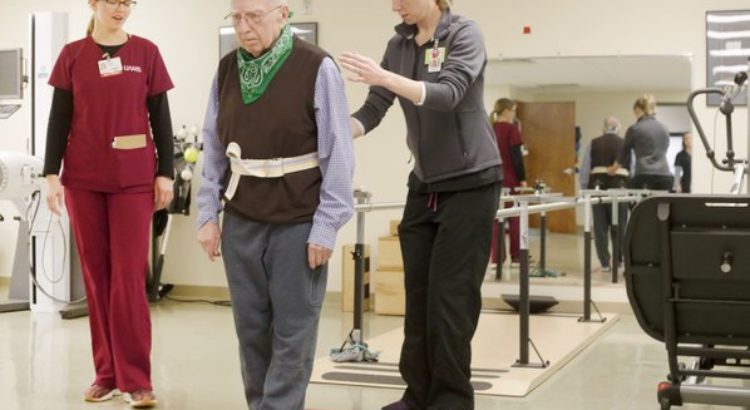EEUU/March 13, 2018/Source: http://www.nwaonline.com/
Higher education institutions are increasing class sizes and starting programs to meet the growing need for health care workers in Northwest Arkansas, school officials said.
«We believe we are addressing the workforce shortage — not just in Arkansas — but specifically, the increased need that is projected for Northwest Arkansas,» said Stephanie Gardner, interim chancellor at the University of Arkansas for Medical Sciences.
Fastest growing in Arkansas
The fastest-growing occupation through 2024 is projected to be occupational therapy assistants with a 54 percent growth. Physical therapist aides are expected to grow by 45 percent, and physical therapist assistants are expected to see 42 percent growth over the same time period.
Source: Arkansas Department of Workforce Services
Northwest Arkansas is among the fastest growing areas in the nation and is expected to reach 800,000 people by 2040, according to a 2016 report by the Northwest Arkansas Regional Planning Commission. That growth means more health care professionals and support staff members are needed, said Mervin Jebaraj, director at the Center for Business and Economic Research at the University of Arkansas.
The region also has an aging population, more access to insurance than previous years and more health care workers nearing retirement, Jebaraj said. The combination is driving the need for more workers, he said.
The Northwest Arkansas metropolitan statistical area — which includes Benton, Washington and Madison counties in Arkansas and McDonald County, Mo. — will need about 1,000 medical professionals and 800 support staff annually through 2028, Rob Smith, Northwest Arkansas Council communications and policy director, wrote in an email. From 2015 to 2016, about 1,024 people became health care staff or professionals, he wrote.
The council is a group of business and community leaders who attract businesses to Northwest Arkansas and improve the area’s workforce.
Statewide, about 15,000 health-care-related jobs have been created since 2014, Jebaraj said. That increase is expected to continue.
«We’ve seen health care jobs across the state and in Northwest Arkansas go up significantly,» Jebaraj said.
Health care technicians, practitioners and support specialist jobs are expected to grow in Benton and Washington counties by nearly 5 percent between 2016 and 2018, according to the Arkansas Department of Workforce Services. That’s above the statewide prediction of 3.6 percent over the same time period.
«What’s encouraging is that many of our region’s school districts are actively addressing our need for those health care support staff,» Smith said. «There’s a real willingness to be active creators of new programs.»
Expanding with need
Educational programs, from bachelor’s degrees to nine-week certificates, are growing among Northwest Arkansas institutions. The schools are partnering to funnel students into more education.
UAMS and Northwest Arkansas Community College are working on an early acceptance agreement for the community college’s students to go directly into the Radiologic Imaging Sciences program at the university’s campus in Fayetteville.
The University of Arkansas and UAMS are offering a new occupational therapy doctorate program. The first students in the program will arrive during the 2019 school year, said Fran W. Hagstrom, assistant dean for the UA College of Education and Health Professions.
That joint-venture works in part because UAMS started a physical therapy program that could become a pipeline for other programs, Hagstrom said. The first cohort of physical therapy students at UAMS graduate in May, which means the new program is on target for professional accreditation, said Susan Long, interim dean of the UAMS College of Health Professions.
Schools are working together, including hospitals and clinics that accept more students to train, said Jamin Snarr, EMS program director at Northwest Arkansas Community College.
«Everybody kind of stepped up to help us out and allowed us to increase our student numbers,» Snarr said.
NWACC agreed in November to accept licensed practical nurse graduates from Northwest Technical Institute into its registered nursing program early. About 50 nursing students at the technical school are expected to graduate this May and be eligible for the early admittance.
«It’s just a pathway from Northwest Technical Institute to further their nursing career with higher degrees,» said Blake Robertson, institute president.
Hospitals in particular are looking for more education among its employees, Robertson said.
The shortage of health care professionals includes paramedics, Snarr said.
The employee turnover rate at Central Emergency Medical Service, an ambulance service that covers nearly all of Washington County, was about 17 percent last year. Officials with Central EMS and fire departments have said they struggle to find, recruit and keep paramedics.
That shortage is why the community college accepted 25 students, instead of the usual 18, into the paramedic program this spring, Snarr said. The school plans to expand to 34 students until the shortage is over, he said.
The institute plans to begin a short-term phlebotomy program starting next fall.
UAMS continues to grow in the area. It is assessing whether to start a sonography program and wants more students in radiological imaging sciences, Gardner said. The master’s degree in genetic counseling program is growing to eight students, and four of those students will be at the Northwest campus.
The competition
Schools are trying to expand while continuing to give students quality education and find space, officials said. But, there is a bottleneck at the education level, Jebaraj said.
The University of Arkansas gets about 400 applications for 100 student spots per semester, Hagstrom said.
«That’s not uncommon among health professionals at all,» she said.
For example, 261 people applied for 36 slots in the UAMS physician assistant program this year, according to the school. The ratio for speech language pathology is even worse — 151 applications for about 20 spots.
Competition among students is stiff, Robertson said.
Last semester, the institute moved students in its nursing and surgical technology programs into a bigger classroom and laboratory, but it’s not enough, Robertson said. The school needs more space, and applications are on the rise.
«We turn away good students because we just don’t have the space,» Robertson said.
Robertson asked the state for a $3.5 million grant to double the size of its center for health care programs about a year ago but didn’t get the money, he said. He plans to ask the governor again, he said.
Schools inevitably must accept more students, but growth should be done so class sizes don’t overwhelm instructors and students still get the education they expect, Hagstrom said. Decisions on growth are up to the schools, she said.
«Can we expand? Absolutely,» Hagstrom said about the University of Arkansas. «And, I think we will see some expansion of programs in the coming years.»
Source:
http://www.nwaonline.com/news/2018/mar/11/northwest-arkansas-schools-expand-healt/?news









 Users Today : 91
Users Today : 91 Total Users : 35459997
Total Users : 35459997 Views Today : 127
Views Today : 127 Total views : 3418592
Total views : 3418592